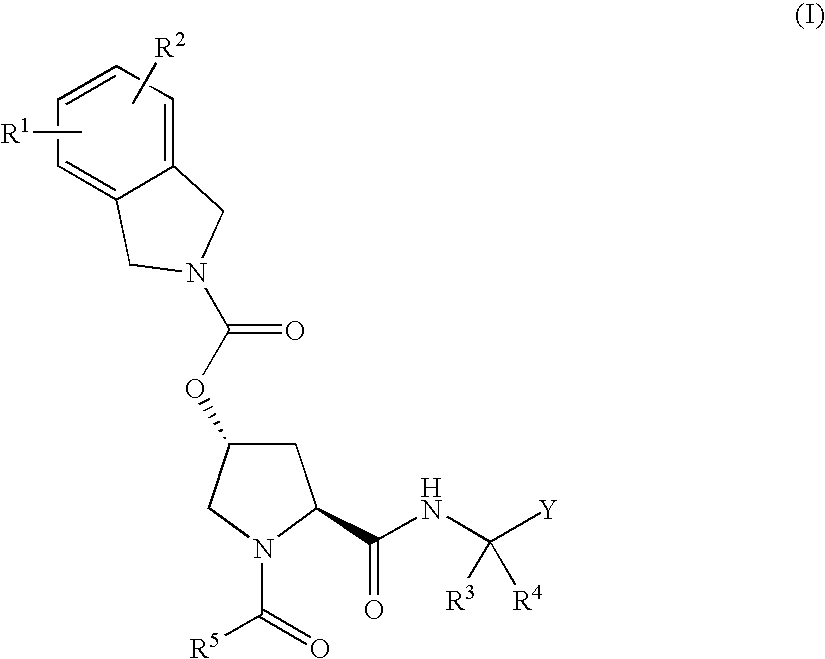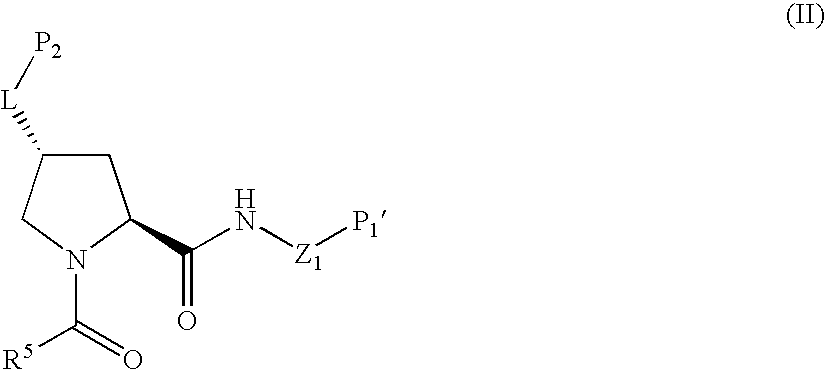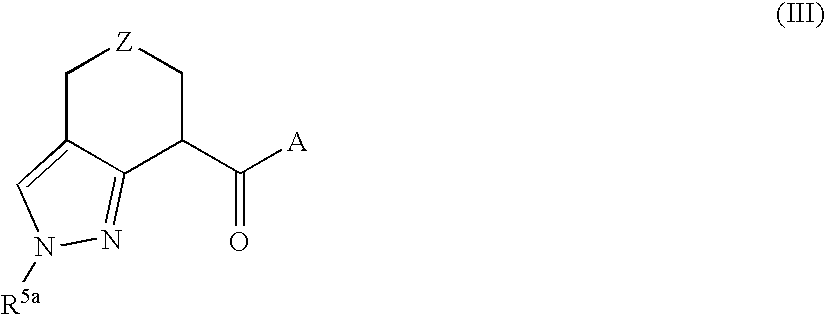Novel inhibitors of hepatitis c virus replication
a technology of hepatitis c virus and inhibitors, which is applied in the direction of biocide, drug composition, peptide/protein ingredients, etc., can solve the problems of 40% to 50% of patients who fail therapy, non-responders or relapsers, and patients currently have no effective therapeutic alternative, etc., to achieve the effect of increasing liver function
- Summary
- Abstract
- Description
- Claims
- Application Information
AI Technical Summary
Benefits of technology
Problems solved by technology
Method used
Image
Examples
example a
[0460] NS3 Complex Formation with NS4A-2.
[0461] Recombinant E. coli or Baculovirus full-length NS3 was diluted to 3.33 μM with assay buffer and transferred material to an eppendorf tube and place in water bath in 4° C. refrigerator. The appropriate amount of NS4A-2 to 8.3 mM in assay buffer was added to equal the volume of NS3 in step 2.1.1 (conversion factor−3.8 mg / 272 μL assay buffer). The material was transferred to an eppendorf tube and place in water bath in 4° C. refrigerator.
[0462] After equilibration to 4° C., equal volumes of NS3 and NS4A-2 solutions were combined in an eppendorf tube, mix gently with a manual pipettor, and incubate mixture for 15 minutes in the 4° C. water bath. Final concentrations in the mixture are 1.67 μM NS3, 4.15 mM NS4A-2 (2485-fold molar excess NS4A-2).
[0463] After 15 minutes at 4° C., the NS3 / NS4A-2 eppendorf tube was removed and place it in a room temperature water bath for 10 minutes. NS3 / NS4A-2 was alliquoted at approp...
example b
NS3 Inhibition Assay
[0464] Sample compounds were dissolved to 10 mM in DMSO then diluted to 2.5 mM (1:4) in DMSO. Typically, compounds were added to an assay plate at 2.5 mM concentration, yielding upon dilution a starting concentration of 50 microM in the assay inhibition curve. Compounds were serial diluted in assay buffer to provide test solutions at lower concentrations.
[0465] The E. coli. NS3 / NS4A-2 was diluted to 4 nM NS3 (1:417.5 of 1.67μM stock−18 μL 1.67 μM stock+7497 μL assay buffer). The BV NS3 / NS4A-2 was diluted to 6 nM NS3 (1:278.3 of 1.67 μM stock−24 μL 1.67 μM stock+6655 μL assay buffer). Using the manual multichannel pipettor, careful not to introduce bubbles into the plate, add 50 μL assay buffer to wells A01-H01 of a black Costar 96-well polypropylene storage plate.
[0466] Using the manual multichannel pipettor, careful not to introduce bubbles into the plate, add 50 μL of diluted NS3 / NS4A-2 from step 2.2.6 to wells A02-H12 of plate in step 2.2.7. Using the manua...
PUM
| Property | Measurement | Unit |
|---|---|---|
| Time | aaaaa | aaaaa |
| Time | aaaaa | aaaaa |
| Time | aaaaa | aaaaa |
Abstract
Description
Claims
Application Information
 Login to View More
Login to View More - R&D
- Intellectual Property
- Life Sciences
- Materials
- Tech Scout
- Unparalleled Data Quality
- Higher Quality Content
- 60% Fewer Hallucinations
Browse by: Latest US Patents, China's latest patents, Technical Efficacy Thesaurus, Application Domain, Technology Topic, Popular Technical Reports.
© 2025 PatSnap. All rights reserved.Legal|Privacy policy|Modern Slavery Act Transparency Statement|Sitemap|About US| Contact US: help@patsnap.com



